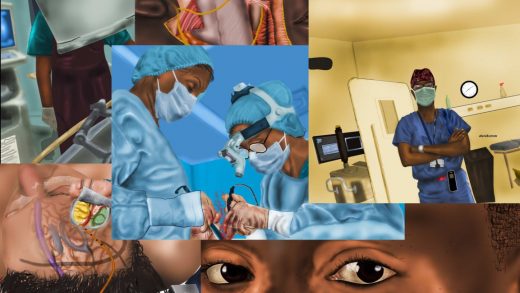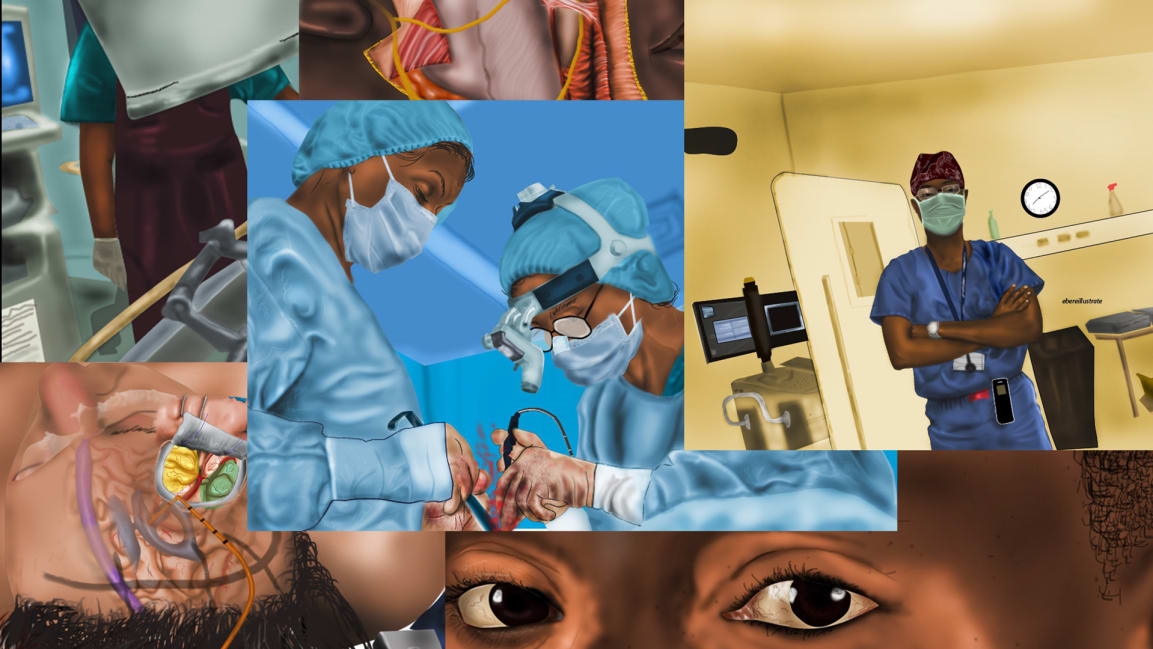Doctors have dehumanized Black people for centuries. This illustrator believes art could help
If you crack open a medical textbook, chances are every illustration inside will be of a Caucasian person.
Chidiebere Ibe, a 25-year-old Nigerian medical illustrator and first-year medical student, always thought it was bizarre that the public health pamphlets he received growing up showed only images of white bodies. “There would be an illustration of measles and it would be on Caucasian skin,” he tells me. “These were being handed out to a Nigerian population. Our skin is Black.”
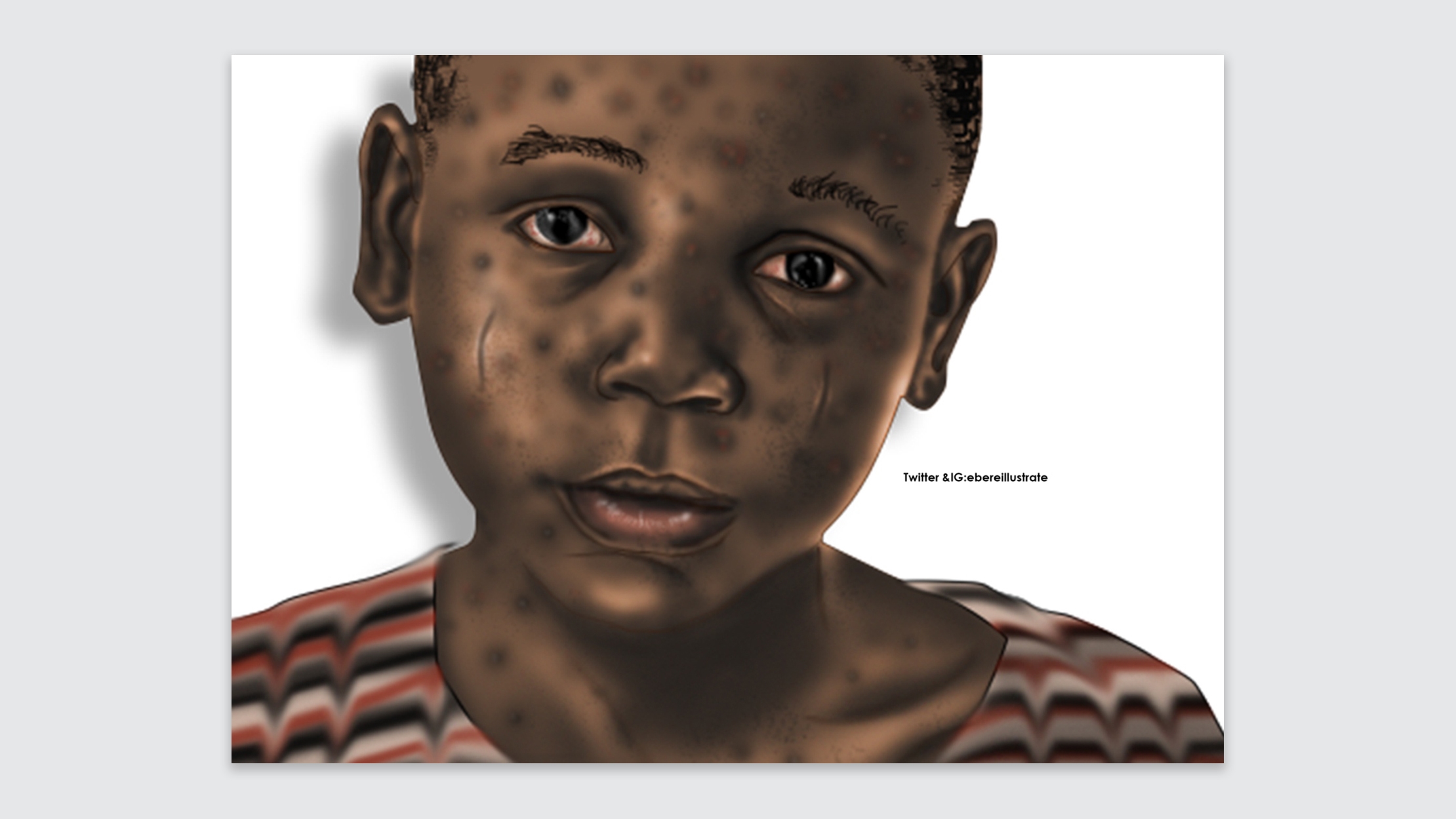
He’s not wrong: Studies have found that upwards of 76% of bodies in anatomy textbooks feature white people. Ibe has taken it upon himself to make medical illustrations more diverse. He’s spent the last year drawing detailed pictures designed to be used in medical textbooks or public health announcements that feature Black bodies, covering everything from childbirth and brain surgery to Black surgeons in the operating room. Ibe believes that these images aren’t just for the Black community; they can be used to help doctors of all races better relate to their Black patients.
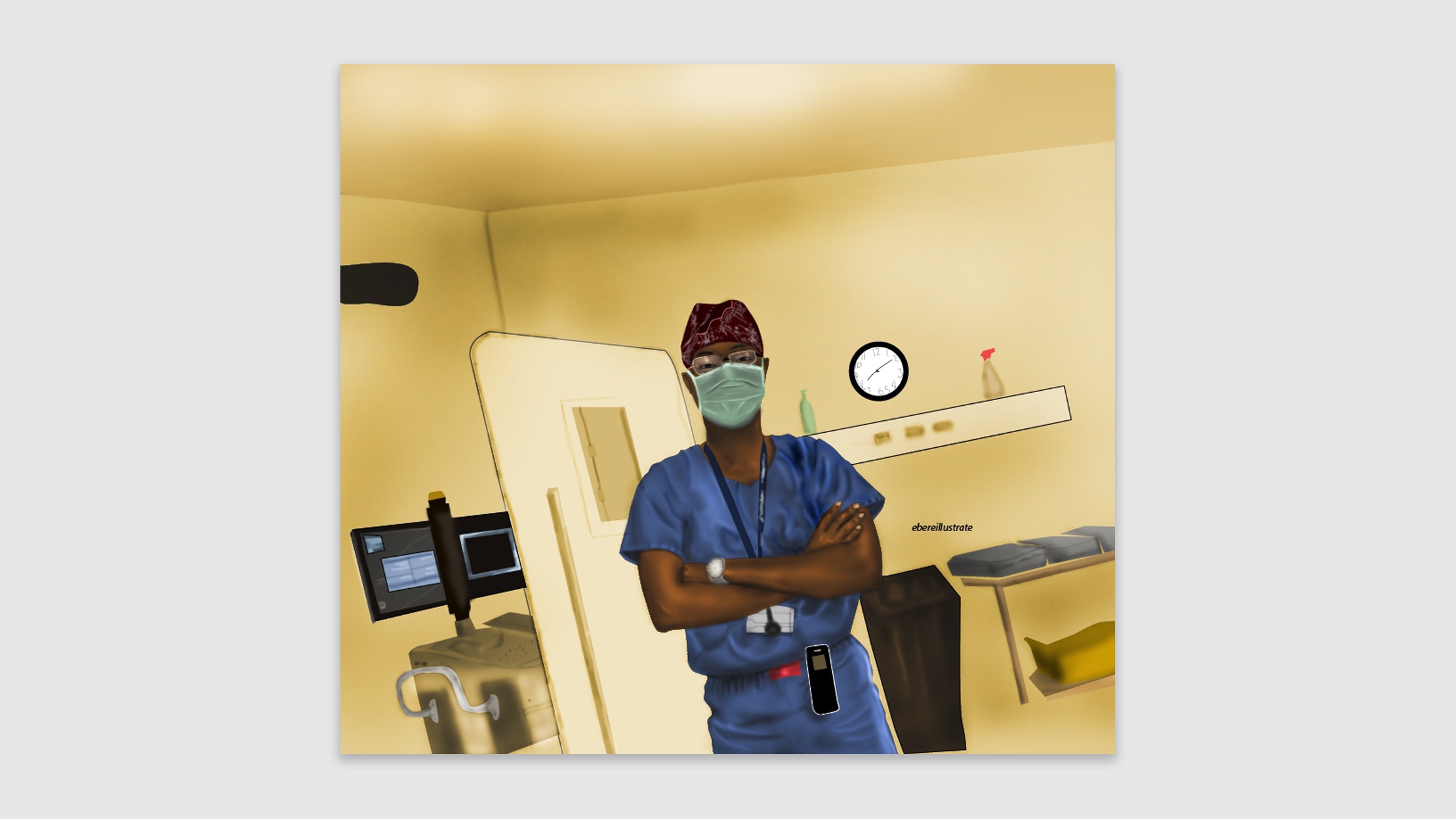
In the United States, there’s a long history of the medical community dehumanizing Black people. Doctors regularly used enslaved people in medical experiments, cutting up their bodies without using anesthesia, even as they screamed in pain and bled to death. In more recent times, white doctors conducted research on Black people without their consent, including the notorious Tuskegee Syphilis Study, which resulted in the death of 100 Black people between 1932 and 1972. Even today, there is a lot of evidence that doctors underestimate Black patients’ pain and view them as less intelligent.
While there may be many reasons that doctors tend to dehumanize Black people, Ibe argues the fact that medical textbooks are filled entirely with white bodies greatly contributes to the problem. “A lot of medical research began in the West, so medical illustrations of white bodies is the norm,” he says. “I don’t think these textbooks are deliberately leaving Black bodies out. But nonetheless, it sends the message that the medical needs of Black people aren’t as important, or that we don’t matter.”

But it also struck Ibe that the problem could be relatively easy to correct. Passionate about becoming a pediatric neurosurgeon, Ibe has long pursued art and illustration as a hobby. In the midst of the pandemic lockdowns last year, he was looking for something useful to do. A member of the organization, Association of Future African Neurosurgeons, Ibe found a mentor in Dr. Ulrick Sidney, who encouraged him to start creating these illustrations himself.
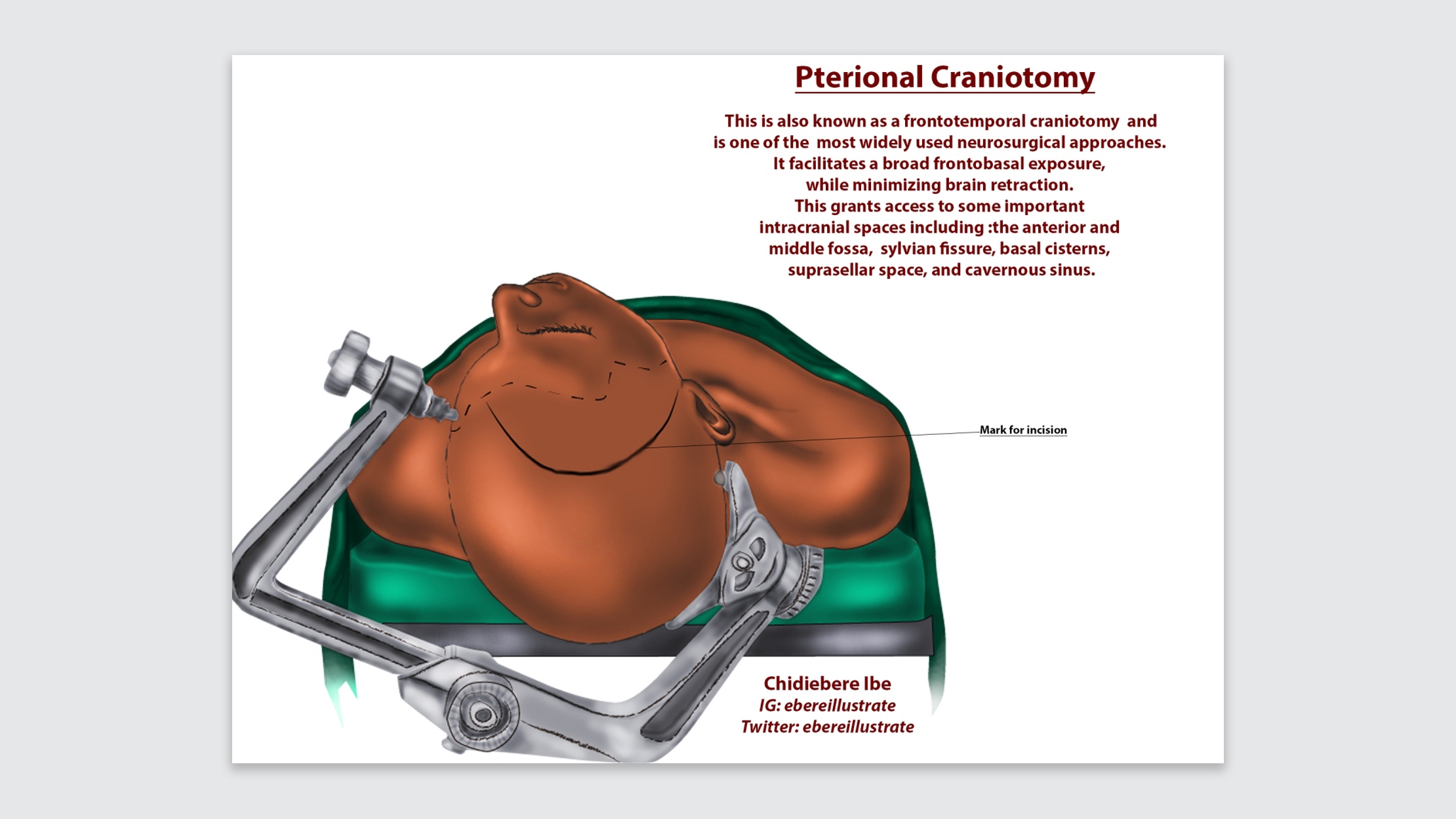
Before he could get started, Ibe had a lot to learn. For one thing, he had an old computer that didn’t have graphic design software on it. He taught himself how to use Adobe Photoshop, then he started mimicking medical illustrations, but using accurately drawn Black bodies. He kept returning to Sidney and other doctors in his network, to get their advice on making accurate drawings. “There are no online tutorials for this, so I had to teach myself everything,” he says. “I relied on the mentorship and support of these doctors.”

He began posting his illustrations on Instagram and Twitter, and they quickly went viral. Many people simply hadn’t thought about the lack of diversity in medical illustrations. But Ibe says he was also stunned by some people’s comments. “The illustration of a Black fetus got really interesting comments,” he says, referring to his most well-known illustration that was shared hundreds of thousands of times on social media. “Some people didn’t believe that babies were born with Black skin; they think they are born white and then get darker. As a Nigerian, in a country full of Black people, I can assure you that is not true.”

In November 2020, Ibe became chief medical illustrator for the Journal of Global Neurosurgery. This past summer, after being accepted to Kyiv Medical School in Ukraine, Ibe started a GoFundMe campaign to raise money for his tuition. He also created a YouTube video, where he promotes his medical illustrations, discusses the lack of representation of Black bodies in medical textbooks and why it’s so detrimental, as well as his motivation for trying to change the status quo.
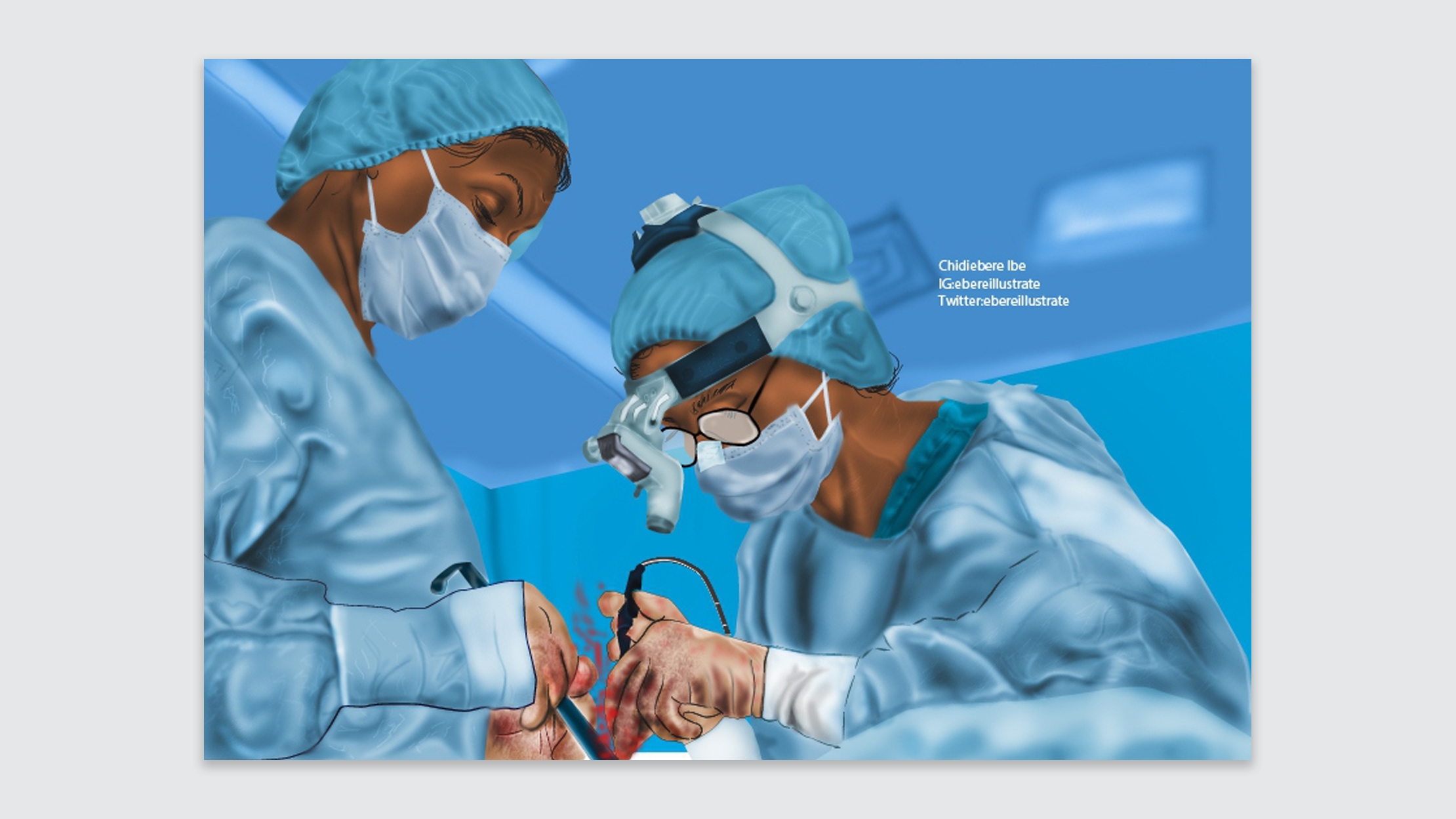
As for his work as a medical illustrator, Ibe plans to keep posting these drawings. Many people have asked how much he charges for his images, but he insists he wants them to be free to use. “The problem is that public health organizations and doctors just don’t have access to images of Black people,” he says. “That’s part of the reason why we keep relying on images of white bodies. But I don’t want to be the only illustrator doing this; it would be great if there were bodies of all races in our textbooks.”
(57)

